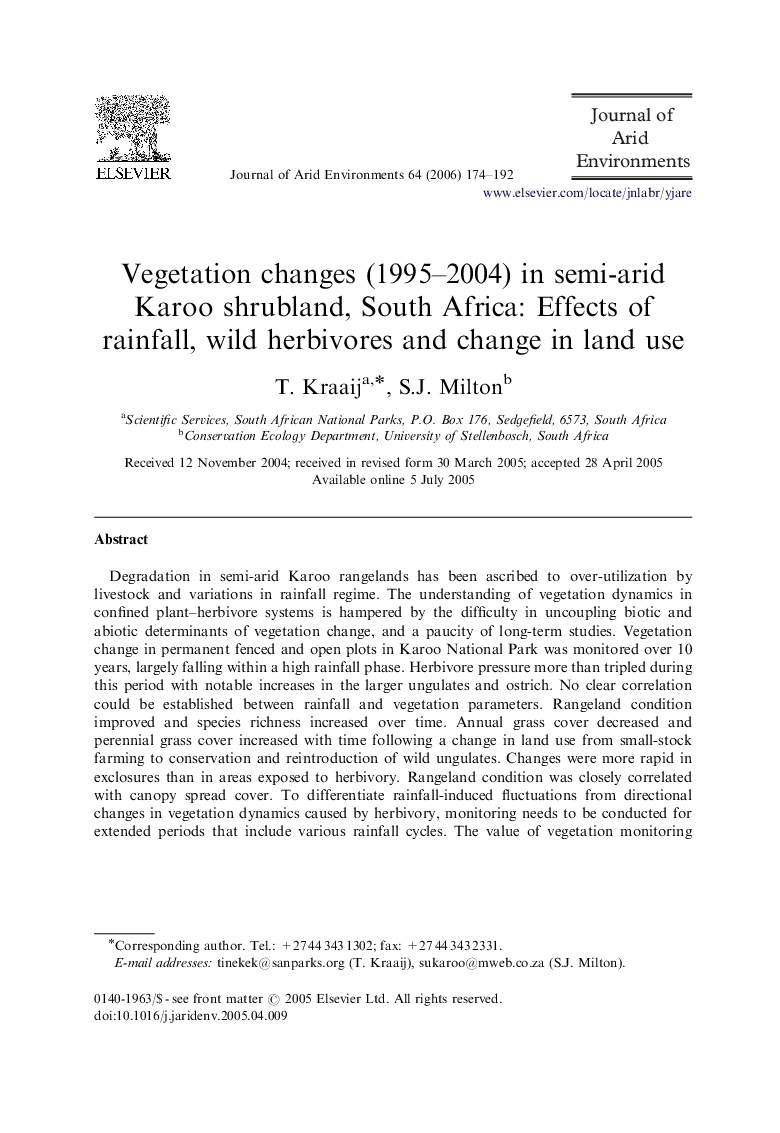| Article ID | Journal | Published Year | Pages | File Type |
|---|---|---|---|---|
| 4394896 | Journal of Arid Environments | 2006 | 19 Pages |
Degradation in semi-arid Karoo rangelands has been ascribed to over-utilization by livestock and variations in rainfall regime. The understanding of vegetation dynamics in confined plant–herbivore systems is hampered by the difficulty in uncoupling biotic and abiotic determinants of vegetation change, and a paucity of long-term studies. Vegetation change in permanent fenced and open plots in Karoo National Park was monitored over 10 years, largely falling within a high rainfall phase. Herbivore pressure more than tripled during this period with notable increases in the larger ungulates and ostrich. No clear correlation could be established between rainfall and vegetation parameters. Rangeland condition improved and species richness increased over time. Annual grass cover decreased and perennial grass cover increased with time following a change in land use from small-stock farming to conservation and reintroduction of wild ungulates. Changes were more rapid in exclosures than in areas exposed to herbivory. Rangeland condition was closely correlated with canopy spread cover. To differentiate rainfall-induced fluctuations from directional changes in vegetation dynamics caused by herbivory, monitoring needs to be conducted for extended periods that include various rainfall cycles. The value of vegetation monitoring would be greater if additional data were collected to measure persistence of uncommon species.
